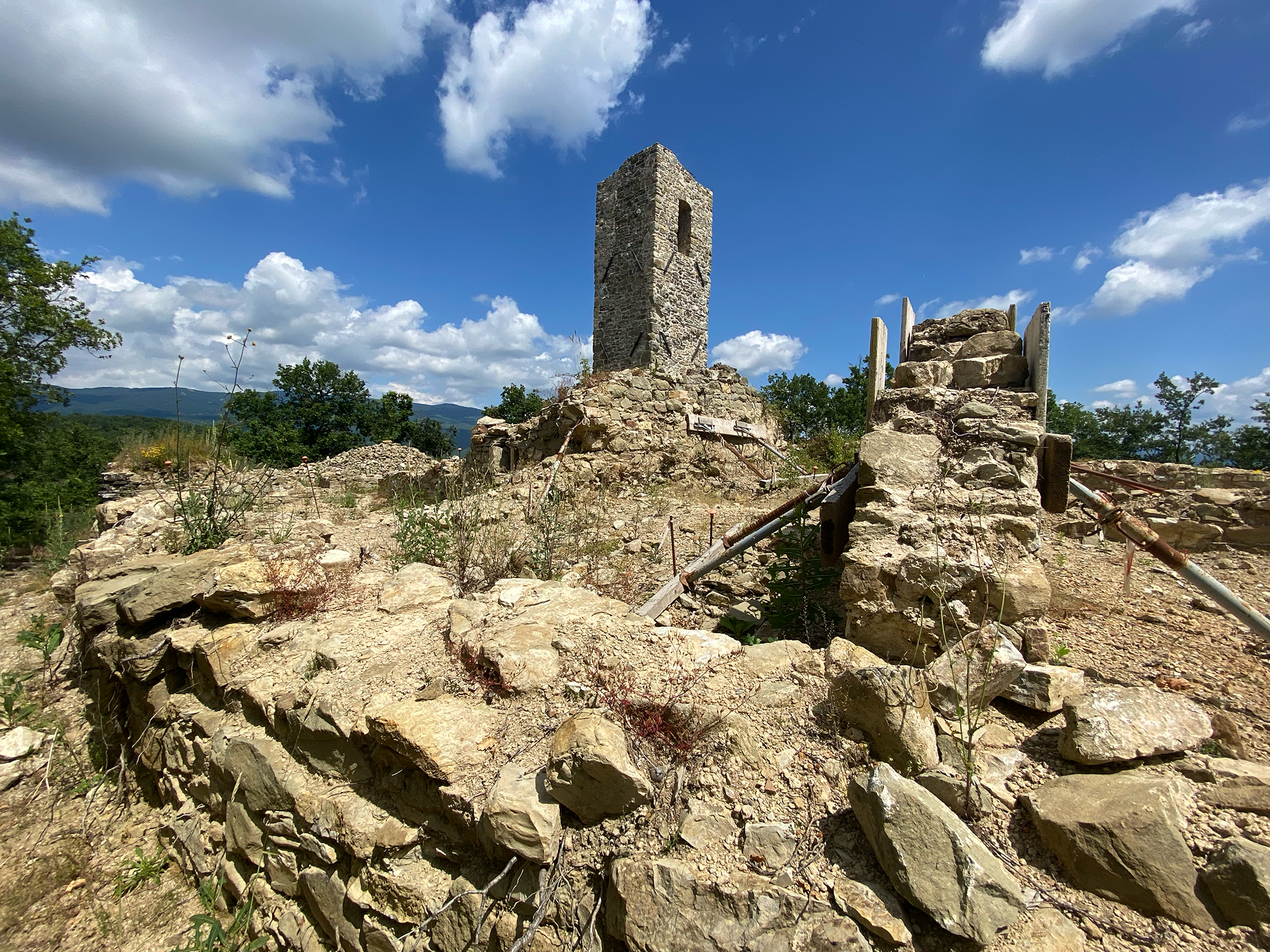
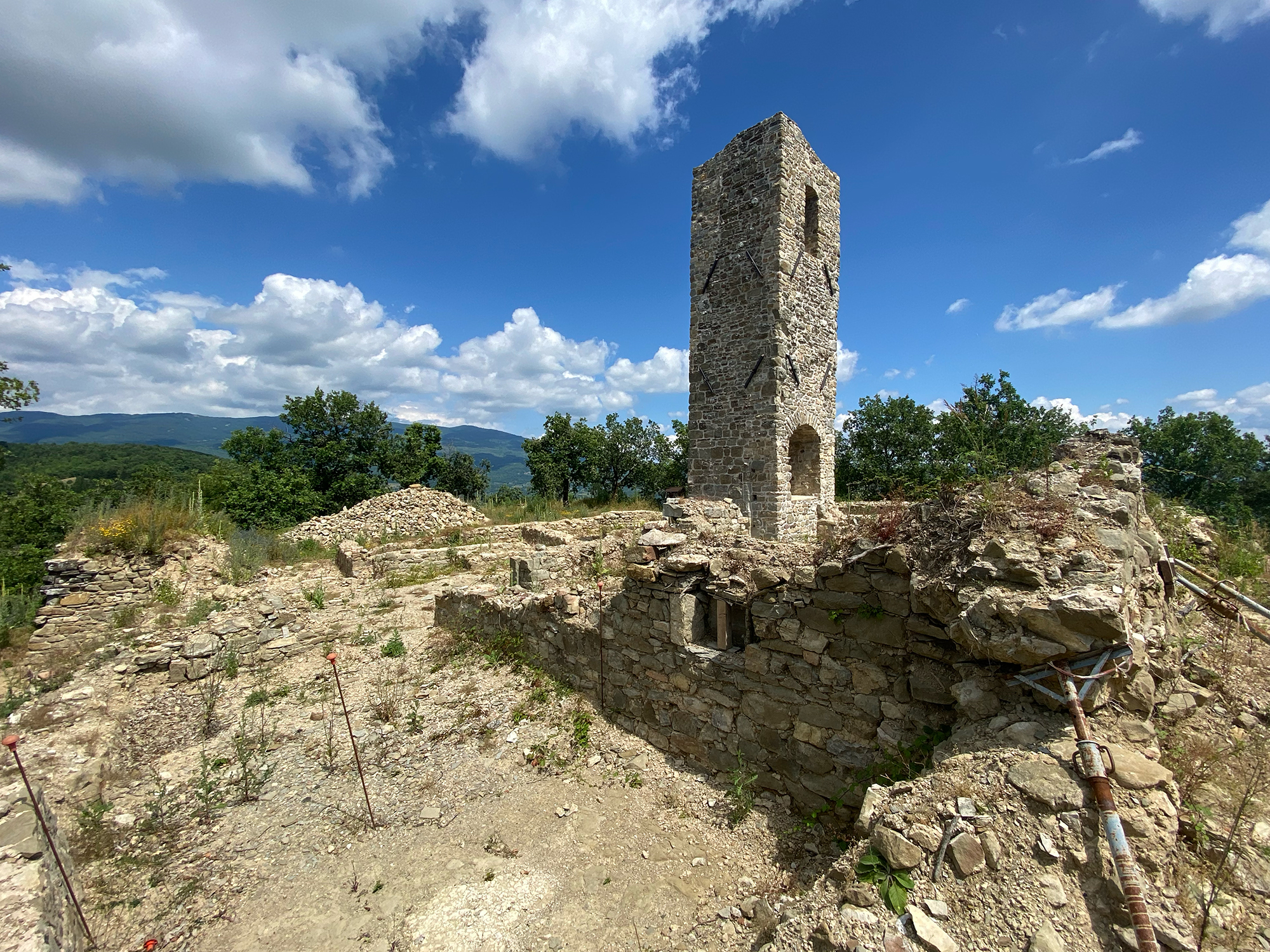
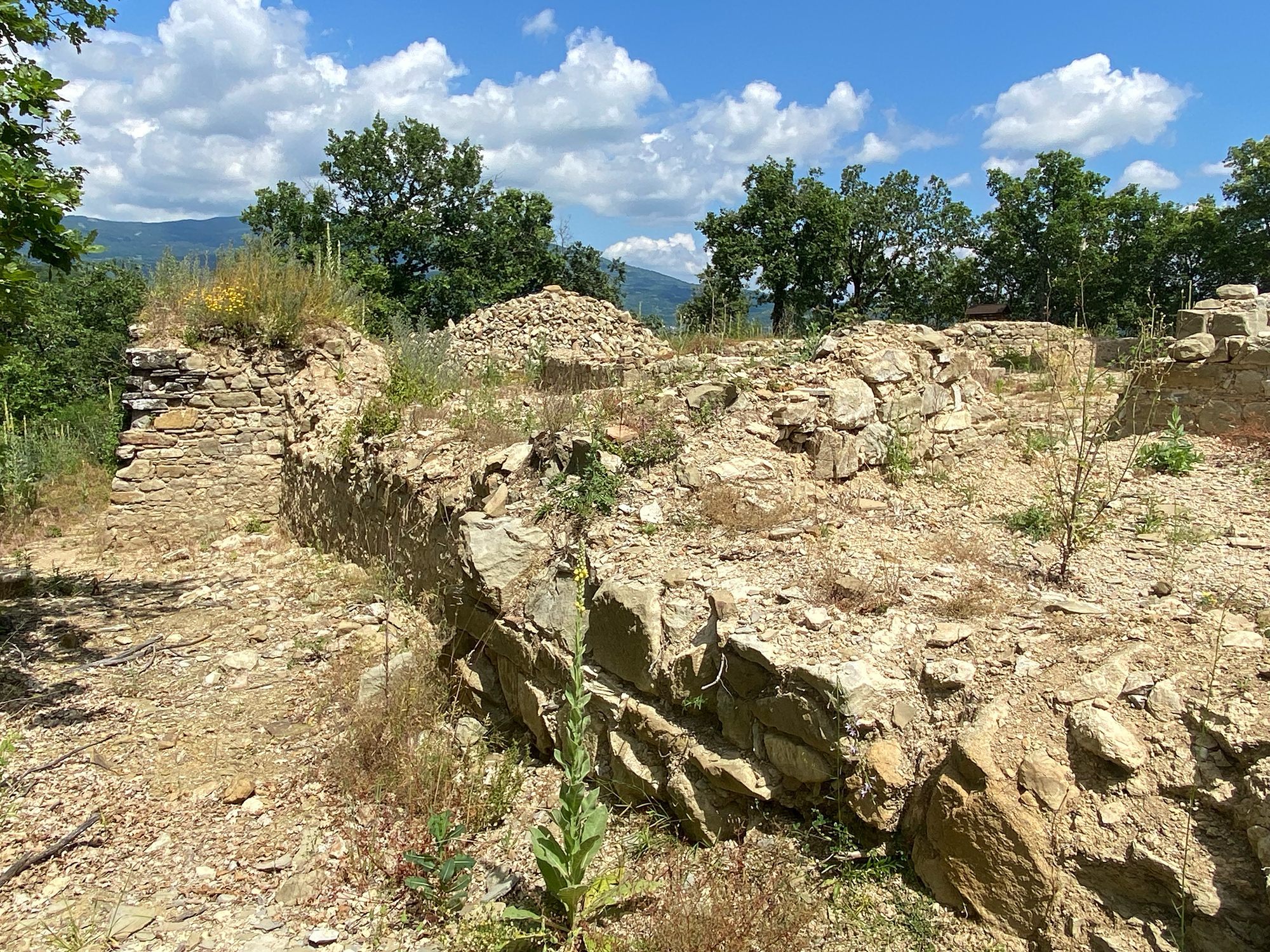
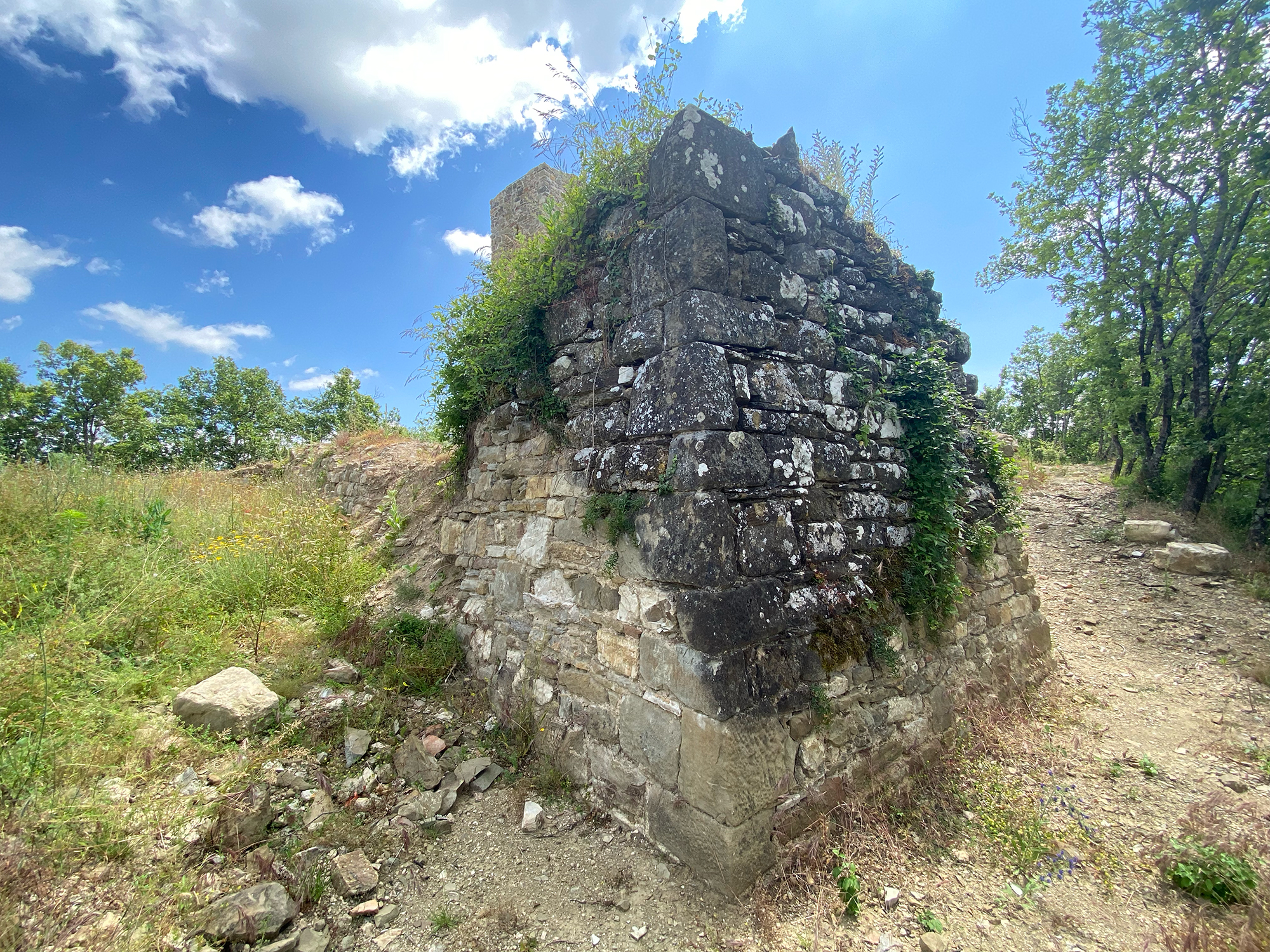
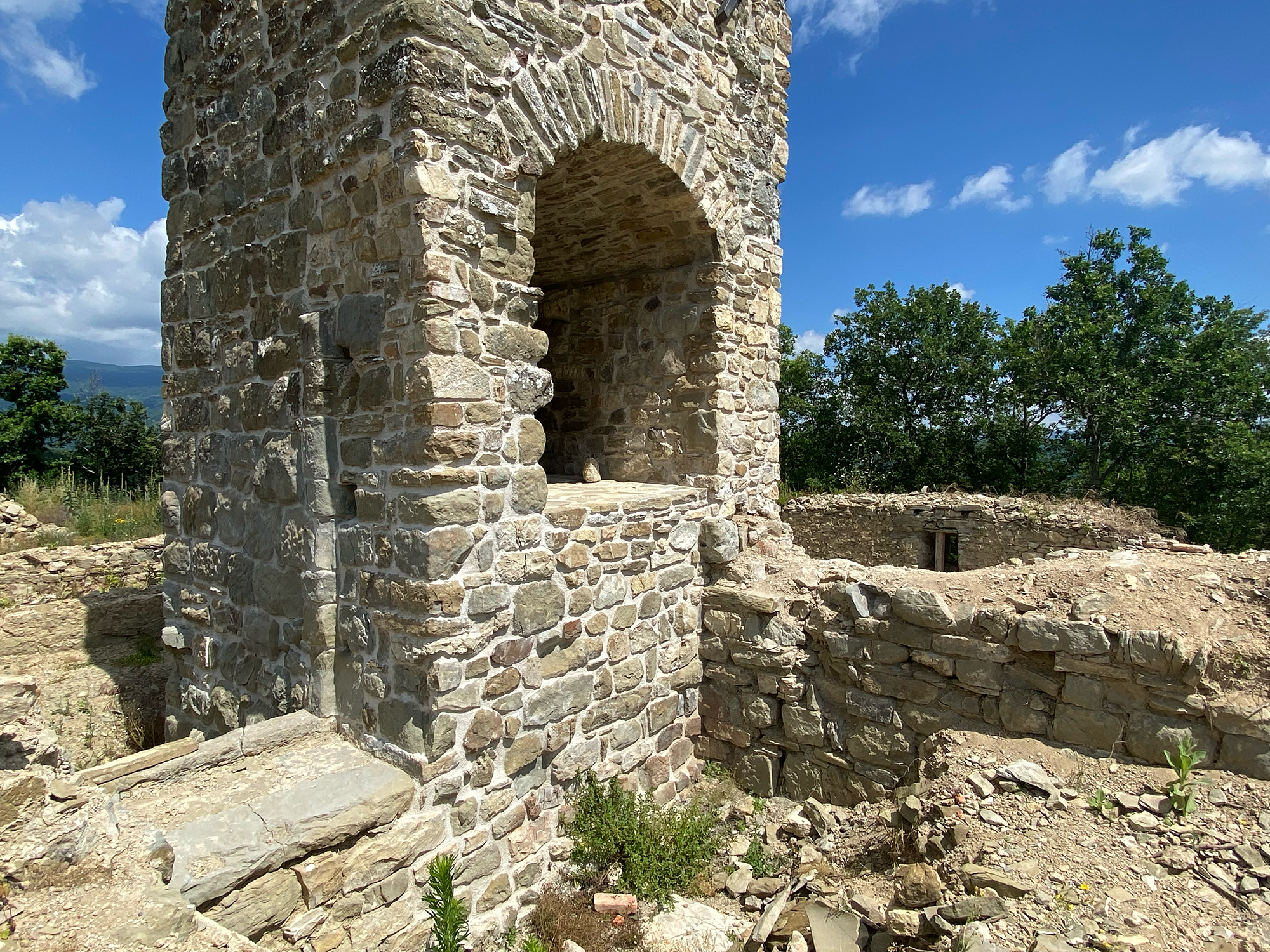
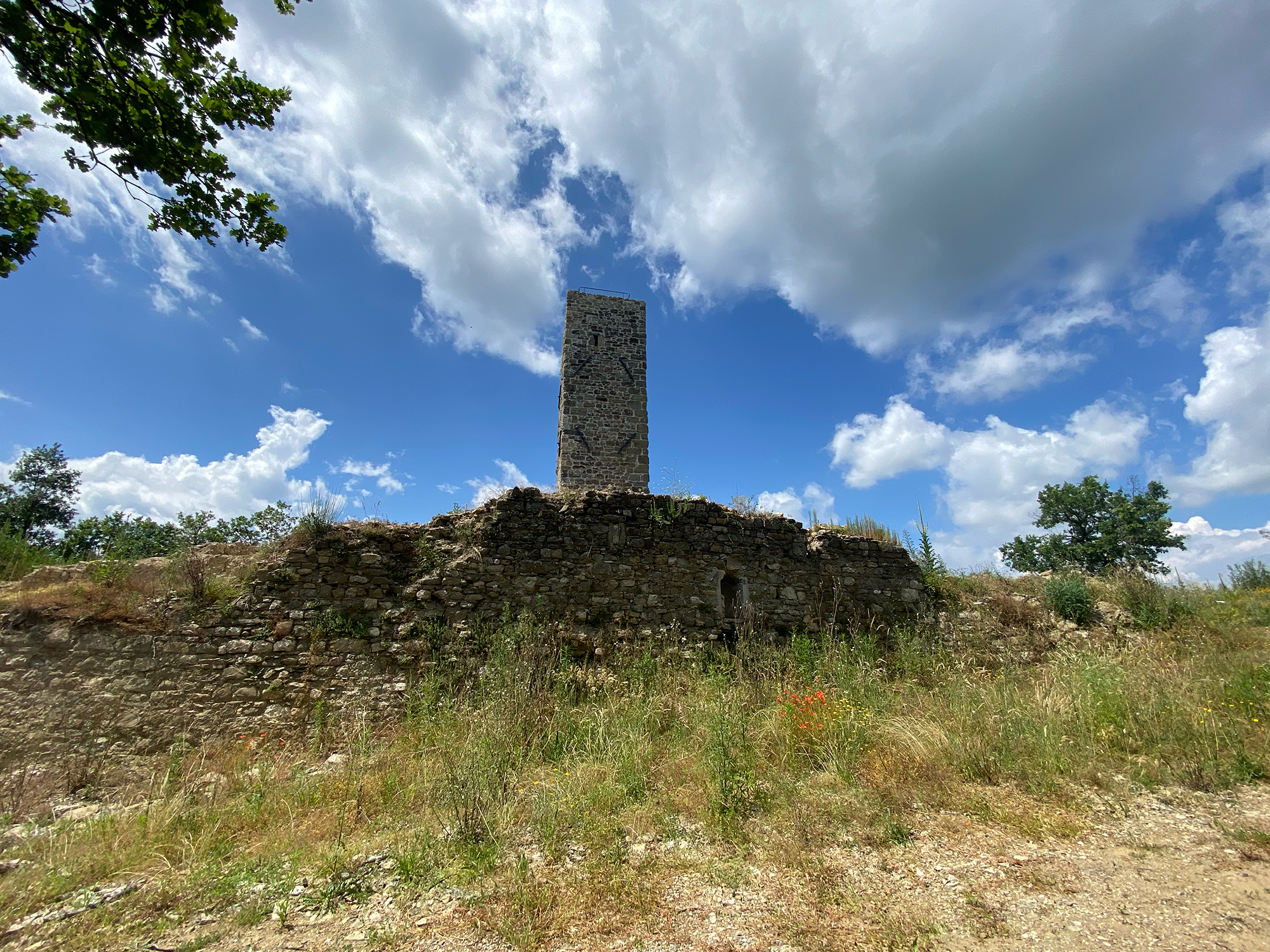
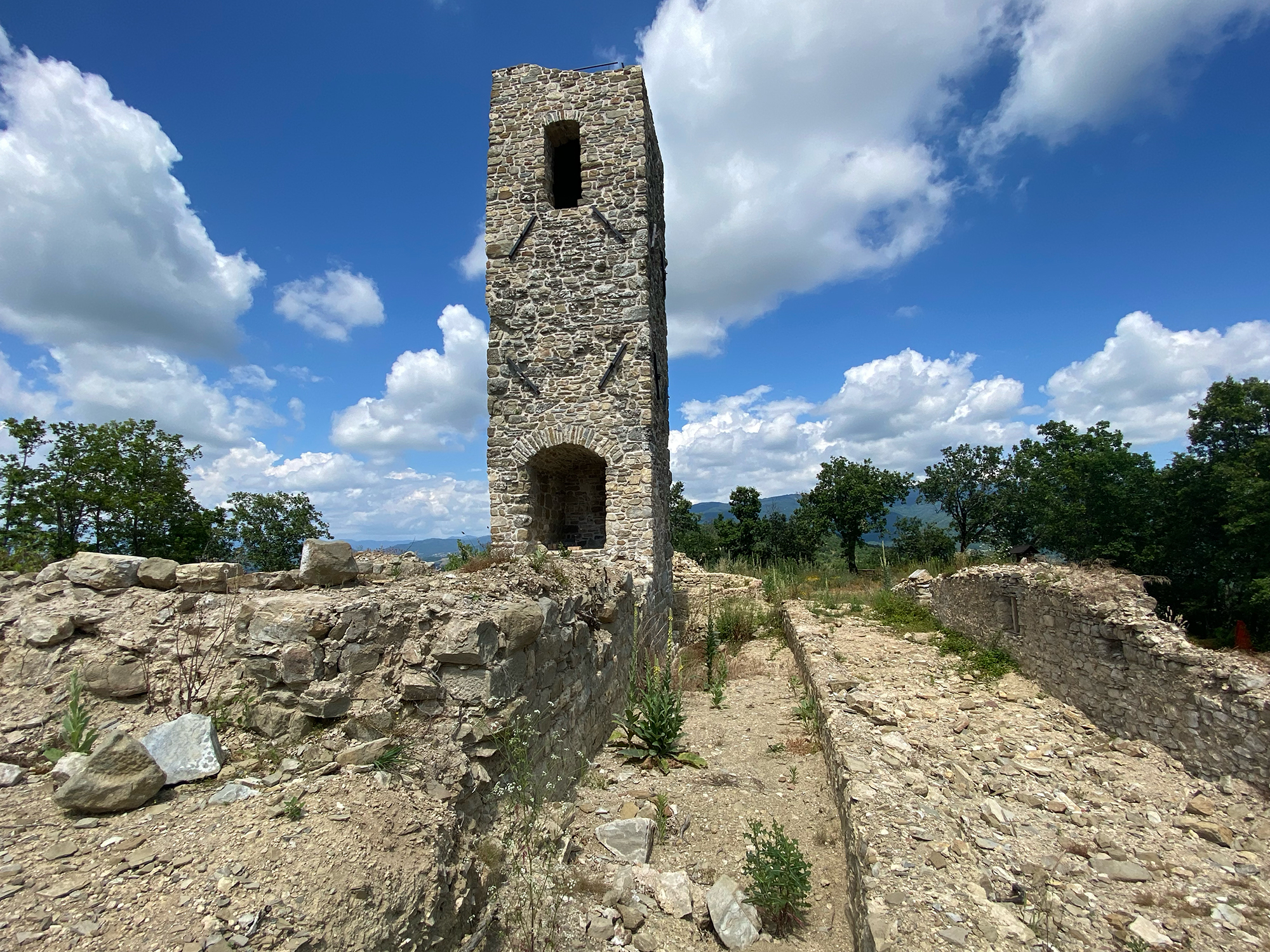







How to reach
Drive along the SR71 Umbro Casentinese Romagnola road, exit at Capolona Sud and continue following the signs for Talla along the Frazione Bibbiano road, turning right after about 400 metres and climbing, always following the signs for Il Santo / Ponina.
History
Belfiore Towers or Belfiore Castle. That is what this fortification is called today. Castle and Towers are definitions that might seem out of place today. The first because rather than a castle, it is a fortified building for controlling the territory. The second because the term 'Towers' is an overstatement because there is only one tower. It might have been right once upon a time when there were at least two towers, as documented by some historical photos from the 1920s, when one of the turrets originally placed at the corners of the walled enclosure towered as high as the surviving one. Originally, there were even three towers.
The fortified settlement appears to be of Longobard origin. However, there are no documents attesting to this with certainty, but the presence of the Longobards in this area is confirmed by the nearby agglomeration of Ponina, which was a Longobard court and the practice of these people was to disseminate the territory with this kind of watchtower.
Another place where the Longobards established themselves for many years is Pontenano, on the slopes of Pratomagno, in the municipality of Talla. Belfiore and Pontenano are as the crow flies, so through visual signals there could be convenient and fast communication between the two places. But in this territory, there are also other places that testify to the previous presence of other cultures, only a few hundred metres away, in the locality of Il Santo, a church dedicated to Sant'Apollinare shows us clear evidence of a Byzantine presence.
The ruins of the castle, however, do not suggest Longobard construction. It is probable that the castrum as it appears to us today was built in feudal times. In the communal period, it was Emperor Frederick I himself, in his plans to reorganise and control the territory, who assigned Belfiore to the Abbey of San Gennaro in Campus Leonis with a diploma dated June 25, 1161.
Campoleone's dominion did not last long, as it was forced to submit to the powerful Commune of Arezzo, which continued to use Belfiore as an outpost since it dominated much of Arezzo's territory from here. After the Battle of Campaldino (June 11, 1289), Arezzo had to submit to the Florentine Republic. Florentine rule grew stronger in the 14th century after the death of Bishop Guido Tarlati (1327) and became absolute in 1384 with the actual sale of the city of gold to the Florentines. In 1385, Martino Pacini, lord of Ponina and Belfiore, lacking the support of Arezzo, found himself forced to subject his court and castle to Florence.
It is not known if and how the Florentines used Belfiore, although on March 26, 1385, the Florentine Republic sent its inspectors there, who described it as a castle with a tower. Given the policy on the Casentino territory that Florence implemented in other places (Pontenano was destroyed in 1425, other important castles abandoned), it is probable that as early as the 15th century the castle was left to itself, and from that moment on, its decline started, which lasted until the recent restoration work that began in October 2021.
It was the archaeological investigations carried out during the consolidation and enhancement of the Tower, financed with funds from the Gal Consorzio Appennino Aretino and the municipal administration's own funds, that brought to light the external wall circuit with turrets at the four corners and an articulated series of internal rooms of which the stone structures with thresholds and jambs of the relative openings are preserved in elevation. Pre-existing structures have also been identified but are yet to be defined. It also appears that within the walls, under one or two metres, rooms may contain artefacts dating back to the Byzantine era.
The archaeological excavation was conducted by the Cooperativa Laboratori Archeologici San Gallo of Florence, in the persons of Dr. Riccardo Bargiacchi and Dr. Dimitri Pizzuto, under the scientific direction of Dr. Ada Salvi of the Soprintendenza Archeologia, Belle Arti e Paesaggio for the provinces of Siena, Grosseto and Arezzo. Once the restoration is complete, the site will be reopened to the public.